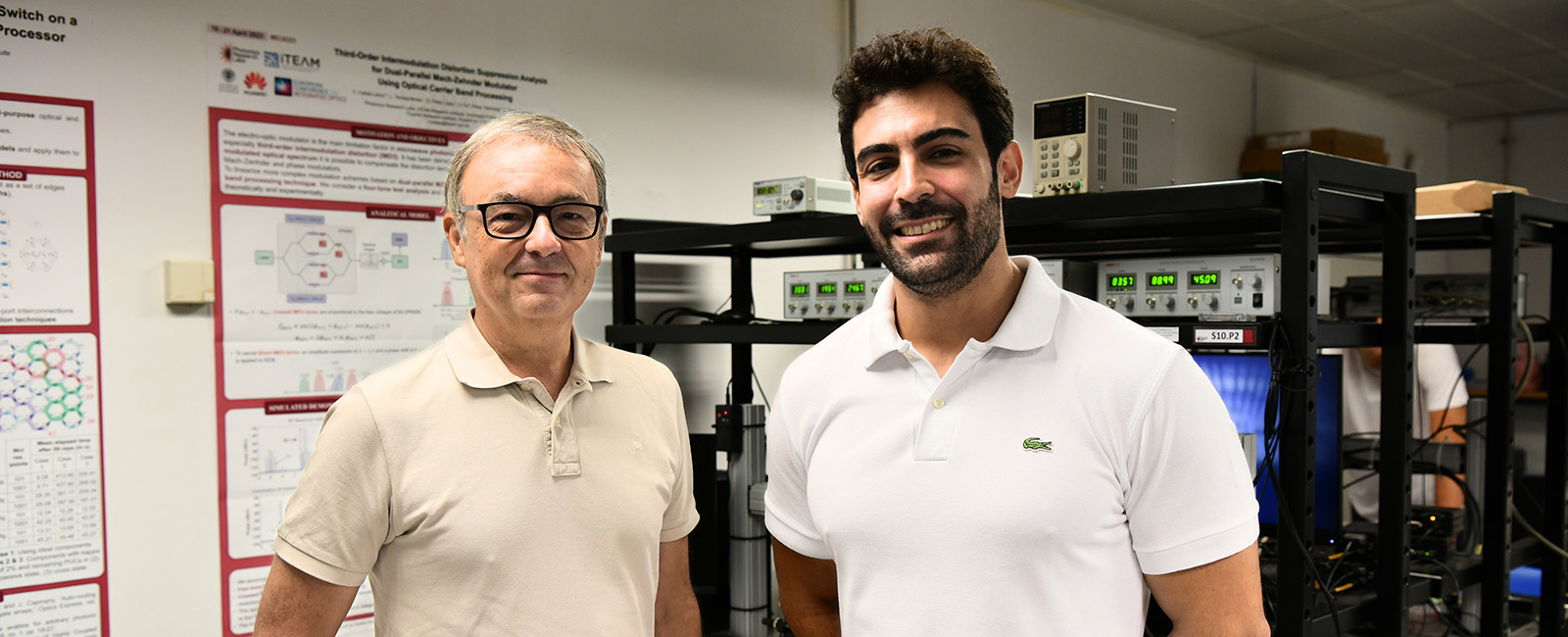RESEARCH TEAM
Principal investigators: José Capmany Francoy (Universitat Politècnica de València) and Andrés Macho Ortiz (Universitat Politècnica de València).
Team members: Cristina Català Lahoz (Universitat Politècnica de València) and Pablo Martínez-Carrasco Romero (Universitat Politècnica de València).
DESCRIPTION
Computational science combines information theory, computation theory and technology to create systems that process information autonomously. Although digital electronics has been the cornerstone of the field, it is now nearing its physical and technological limits. Within the area of programmable integrated photonics (PIP), the team led by José Capmany and Andrés Macho has developed “a way of doing computing with integrated photonic circuits,” says Capmany, “that is, with photonic or light chips.” The project’s aim is to use light as an information source, thereby ramping up computational power while maximizing information-processing capacity.
This new information theory, which they call analog photonic information (API), pursues the creation of information systems based on a new unit of information, the analog bit or anbit. “When we transfer complex information, like the content of a computer screen or an image, it needs to be compressed so we don’t have to send a huge quantity of information or obstruct the channel. But with our technology, it is possible to transmit ten to a hundred times more information using the same resources,” explains Andrés Macho. Not only that, using light as an energy source represents a considerable saving compared to electronic data processing.
So they can fully exploit this computing model, the team will develop a body of knowledge on how the information to be processed with the optical chips is encoded and retrieved. “First comes adaptation,” Capmany explains. “We adapt the information to a format that can be transported by light. And then, once the computation is complete, we extract the information reliably, without errors.” In complementary vein, the team have recently proposed a new computational theory called analog photonic computation (APC), aimed at leveraging PIP as an independent optical computing platform.

